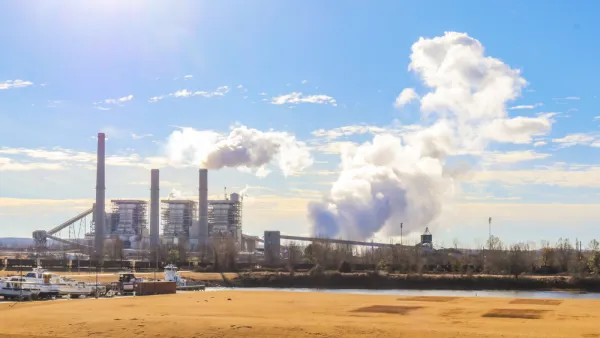Six years after one of the worst environmental disasters in U.S. history, the EPA adopted a rule to regulate a byproduct of coal power plants. The new regulation puts coal ash in the same category as household garbage, disappointing many activists.
"In the early morning hours of Dec. 22, 2008, a dike failed at the (TVA) Kingston (coal power) plant [40 miles west Knoxville, Tenn.], unleashing a billion gallons of coal ash that smothered about 300 acres of land," write Rachel Kinney and Kelsey Page of Knoxville-based WBIR TV. As a result of this and subsequent spills, including most recently the Feb. 2 Dan River spill in North Carolina, the Environmental Protection Agency (EPA) has finally regulated coal ash, adopting a new rule on Dec. 19, almost four years to the date later.
"This new rule protects communities from coal ash impoundment failures, like the catastrophic Kingston, Tennessee spill, and establishes safeguards to prevent groundwater contamination and air emissions from coal ash disposal," blogs EPA's
In fact, if it was to be classified as hazardous waste, "it would prevent them from recycling coal ash to make it into building materials, like concrete and wallboard," writes Climate Progress reporter, Emily Atkin.
Indeed, the EPA has estimated that approximately 45 percent of all coal ash is currently recycled, whole the rest of it is disposed in ponds and landfills.
But environmentalists have taken issue with the recycling process too, saying the lack of regulation on the reuse process means that many recycling facilities are just “dumpsites in disguise." [See Earthjustice report: "Out of Control: Mounting Damages From Coal Ash Waste Sites, Feb. 24, 2010 (PDF).]
EPA directs readers to learn more about coal ash, "one of the largest types of industrial waste generated in the United States. In 2012, 470 coal-fired electric utilities generated about 110 million tons of coal ash."
Hat tip to U.S. Environmental Protection Agency Daily Digest Bulletin
FULL STORY: EPA: Coal ash not 'hazardous waste'

National Parks Layoffs Will Cause Communities to Lose Billions
Thousands of essential park workers were laid off this week, just before the busy spring break season.

Retro-silient?: America’s First “Eco-burb,” The Woodlands Turns 50
A master-planned community north of Houston offers lessons on green infrastructure and resilient design, but falls short of its founder’s lofty affordability and walkability goals.

Delivering for America Plan Will Downgrade Mail Service in at Least 49.5 Percent of Zip Codes
Republican and Democrat lawmakers criticize the plan for its disproportionate negative impact on rural communities.

Test News Post 1
This is a summary

Test News Headline 46
Test for the image on the front page.

Balancing Bombs and Butterflies: How the National Guard Protects a Rare Species
The National Guard at Fort Indiantown Gap uses GIS technology and land management strategies to balance military training with conservation efforts, ensuring the survival of the rare eastern regal fritillary butterfly.
Urban Design for Planners 1: Software Tools
This six-course series explores essential urban design concepts using open source software and equips planners with the tools they need to participate fully in the urban design process.
Planning for Universal Design
Learn the tools for implementing Universal Design in planning regulations.
EMC Planning Group, Inc.
Planetizen
Planetizen
Mpact (formerly Rail~Volution)
Great Falls Development Authority, Inc.
HUDs Office of Policy Development and Research
NYU Wagner Graduate School of Public Service




























